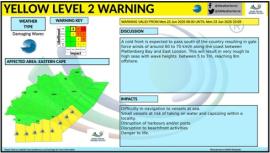What the Western Cape rains tell us about the winter crop conditions
We continue to receive excellent rains in most regions of the Western Cape. I say excellent rains because I am looking at this from an agricultural perspective. From a household’s perspective, the rains have caused challenges in certain areas.
This is a winter crop season, and the Western Cape is a central producing province for South Africa, accounting for over two-thirds of the winter crop plantings.
By ‘winter crop,’ I primarily refer to wheat, barley, canola, and oats. The messages I have received from various people indicate that the crop conditions are favourable, and these rains will help boost the crop-growing conditions.
The South African farmers are optimistic about the 2025-26 winter crop production season. For example, the Crop Estimates Committee indicated at the end of April that farmers intend to plant the 2025-26 winter crop on 827,970 hectares, up 1% from the previous season. This comprises wheat, barley, canola, oats, and sweet lupines. A closer look at the major crops reveals some minor deviations, with all crop area plantings increasing, except for barley, which is declining.
The farmers intend to plant the 2025-26 wheat crop on 513,200 hectares, a 2% increase from the previous season. If we assume relatively favourable weather conditions, as we continue to see in the Western Cape, a central wheat-producing region, and a decent yield of 3.97 tonnes per hectare, which aligns with the five-year average, South Africa’s wheat harvest would be 2.04 million tonnes. This would be up 6% from the 2024-25 production season.
In the case of canola, farmers intend to plant 166,500 hectares, up 0.5% from the previous season. Similarly, if we apply a five-year average yield of 1.89 tonnes per hectare, South Africa could harvest 314,685 tonnes, representing a 9% increase from the previous season. Regarding oats, farmers intend to plant 34,520 hectares, representing an 11% increase from the 2024-25 season. Applying an average yield of 1.54 tonnes per hectare means the harvest could be 53,161 tonnes, representing a 24% increase.
Unlike other crops, farmers intend to reduce barley plantings by 8% to 93,050 hectares in the 2025-26 season. If we apply a five-year average yield of 3.58 tonnes per hectare to barley, we will have a harvest possibility of 333,119 tonnes, down 11% from the previous season.
Overall, it is still too early to tell where the winter crop harvest could be. So far, the focus has been on the weather, and in the central producing province, the conditions appear encouraging. In other provinces, where the crop is primarily irrigated, the dam levels are also at encouraging levels following favourable summer rains, which all bodes well for the winter crop season.










